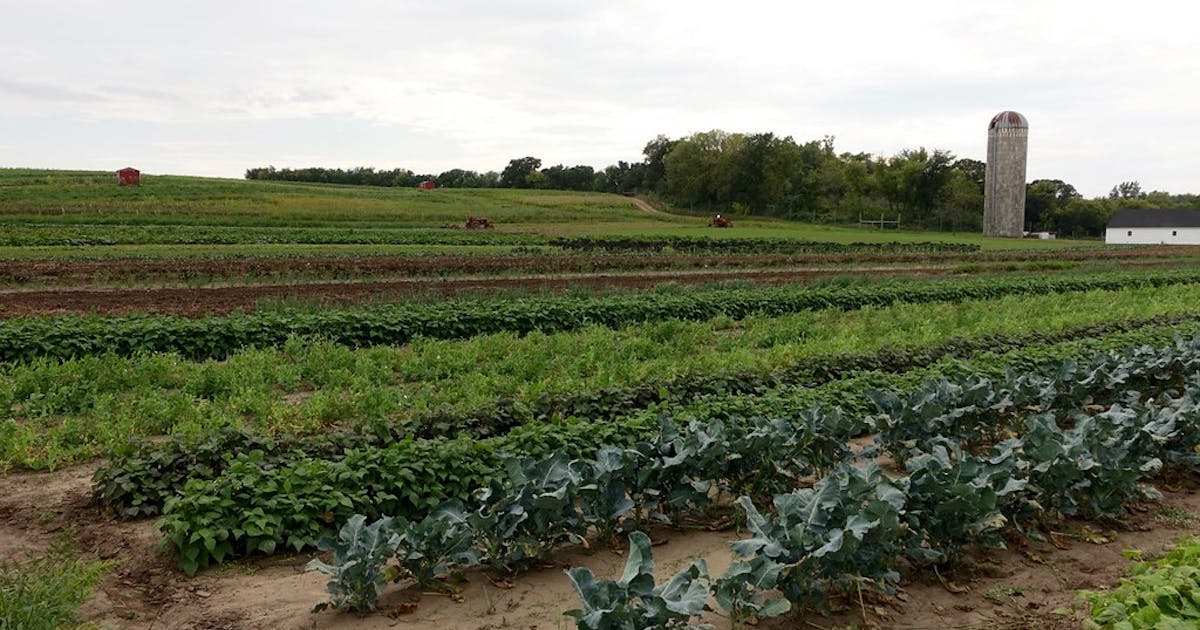Connecting Hmong kids to culture through food

The Hmong American Farmers Association (HAFA) is helping to feed kids in East St. Paul child-care programs by delivering fresh, healthy produce that connects them to their culture.
HAFA wanted to help children in child care, many of whom come from low-income families, by providing healthful dietary choices. The program also benefited them in another way, familiarizing the kids with Hmong culture by including Hmong staple foods such as mustard greens, pea tips and mugwort.
“Their children would go home and would say, ‘I want Tshuaj Hmong hau ntsug Qab,'” HAFA Executive Director Janssen Hang said, referring to the traditional Hmong postpartum soup. “‘I want what Mama Mai created.'”
Following the Vietnam War, thousands of Hmong, mainly from Laos, settled in the Minneapolis-St. Paul area. In an effort to build intergenerational wealth, many of them took up farming. They often face a lack of access to resources, including land, markets, credit and capital.
Hang grew up working on one of these farms. His parents believed the key to success in the United States was through education, an attitude they instilled in their children. They wanted their kids to have careers more stable than farming. To help their parents pay for their private school tuition, Hang and his siblings spent summers tending crops in the scorching heat. After returning to school in the fall, they envied classmates who spent their summers relaxing or going on vacation.
Their hard work and devotion to education turned out to be worth it. Hang and his siblings all graduated from college. His family continues farming to this day. The economic struggles faced by his family and the rest of the Hmong farming community inspired Hang and his sister, Pakou Hang, to start HAFA in 2011.
One way HAFA helps farmers is by introducing them to new markets. Hmong farmers in Minnesota primarily sell produce to farmers markets, which can make income unpredictable. HAFA partners with M Health Fairview through a program called Veggie Rx to help Hmong immigrants with chronic illnesses such as diabetes and cardiovascular disease. Through Veggie Rx, patients who cannot afford to buy culturally appropriate, fresh foods receive produce from Hmong farmers. The program provides benefits for both producers and consumers by opening up new markets for farmers. It also helps patients incorporate healthier, more familiar foods into their diets.
After its success with Veggie Rx, HAFA started a similar program with child-care providers in East St. Paul managed by Hmong people. HAFA noticed many of these providers were eligible for the federally operated Child and Adult Care Food Program, which reimburses providers for the meals they serve children. This program aims to help children by introducing them to fresh produce, which may encourage them to form healthy diets in the future.
As the child-care providers started receiving boxes from HAFA, the program showed another, unexpected benefit. By showing the children how to prepare the produce they received, providers introduced them to traditional dishes in Hmong culture they didn’t know about.
In addition to eating the dishes, the children also helped prepare them by washing and cutting the produce.
“Providers are really engaging the [children] with how to use a produce,” Hang said.
HAFA now wants to expand these programs outside the Hmong community, specifically to Karen and Somali communities in the Twin Cities. Hang said some produce, such as collard greens, are eaten by both Hmong and Somali people.
“Food is medicine, and food connects us all,” Hang said.
ThreeSixty Journalism
These stories were written by ThreeSixty Journalism’s summer 2022 News Reporter Academy high school students. The Academy and its theme of holistic health equity were supported by Center for Prevention at Blue Cross Blue Shield of MN, which connected students with story topics and sources.
ThreeSixty Journalism is leading the way in developing multicultural storytellers in the media arts industry. The program is a loudspeaker for underheard voices, where highly motivated high school students discover the power of voice and develop their own within ThreeSixty’s immersive college success programming. Launched in 1971 as an Urban Journalism Workshop chapter, since 2001 the program has been part of the College of Arts and Sciences at the University of St. Thomas. To learn more about ThreeSixty Journalism, visit threesixty.stthomas.edu.







